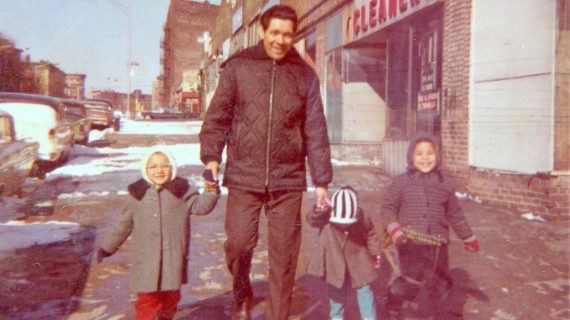Frederica Freyberg:
Now to the rapidly-developing news on the novel coronavirus. The U.S. government today declared a public health emergency and has imposed quarantines for Americans returning from the province in China at epicenter of the outbreak. In Wisconsin, latest numbers are that of the nine people under investigation for coronavirus, two test results have come back negative and seven are still pending. In a moment, we will find out more about the status in Wisconsin. But first, we hear from expert panelists assembled at the UW Hospital in Madison this week who describe symptoms and treatment.
Kristen Bernard:
We see coughing, fevers, initial symptoms. Then it can develop into a severe lung disease, with difficulty breathing and then people often need to be hospitalized and go onto critical care at that point in time. The viruses are usually transmitted through coughing, at least SARS and MERS we know are via coughing. And because of that deep lung infection. So it’s really coughs that are transmitting the virus.
Nasia Safdar:
There is no specific treatment, as you know, for this novel coronavirus, but there is a lot of supportive care that is available and patients that have symptoms that might need that care, we want to make sure we have the capacity and the manpower to accommodate that.
Frederica Freyberg:
Dr. Ryan Westergaard is chief medical officer and state epidemiologist for communicable diseases for the Wisconsin Department of Health Services. He is coordinating the response to the novel coronavirus in Wisconsin. He joins us now and thanks very much for being here.
Ryan Westergaard:
I’m happy to be here.
Frederica Freyberg:
Well so along with the U.S., the World Health Organization has declared the virus a global public health emergency. What are the implications of that here in Wisconsin?
Ryan Westergaard:
Well, in the era of global travel, the implications are that cases, new cases of the novel coronavirus could arise anywhere where people have been in contact with either existing cases or people who have traveled to as you said to the epicenter in mainland China. So far in Wisconsin, we’ve had no cases. We’re remaining vigilant and we’re prepared to the eventuality that we might develop cases from a returning traveler. As you mentioned, there are some people under investigation. Right now we’re in the preparedness phase. We don’t have new cases or any cases but we’re doing everything we can to prepare for the eventuality that we may.
Frederica Freyberg:
As you said, there are nine people under investigation here for this. What puts them in that category that they are under investigation?
Ryan Westergaard:
There are criteria for people for whom we think it’s important to get testing. And the challenge right now is that there’s only one laboratory in the United States where the testing is being done and that’s at the CDC in Atlanta. So in order to have a systematic approach to getting people tested, there are criteria for who meets the conditions that make testing indicated. Right now it’s travel to China plus symptoms suggestive of coronavirus infection. We’ve had a total of nine. Two have been hopefully ruled out at this point.
Frederica Freyberg:
These test results are still pending and as you say, there’s just this one lab at the CDC that is currently doing those tests. Why is it taking so long? Is that why? Because they’re kind of overrun with specimens to test?
Ryan Westergaard:
Yes. We do have a large number of cases. It’s also a brand new test because it’s a brand new virus. So before the description and the genetic sequencing of the virus, there was no way to test for this particular virus. So there’s — I’m certain they’re working around the clock and they are preparing and they’re manufacturing test kits to disseminate to other laboratories around the country that can streamline the process. But that takes some time because it’s very important to make sure that the test works in a reliable fashion. So there’s in addition to manufacturing the test, they have to do the validation. We want to make sure when we give people information, that it’s reliable.
Frederica Freyberg:
It’s reported that six students at UW-Platteville who were recently in Wuhan, China are being monitored by the CDC and that another student in Wauwatosa is being isolated. What about other campuses across the state? What do you think about that?
Ryan Westergaard:
Well, we at the State Health Department don’t speak about individual cases or individual communities, particularly in this current situation where we don’t have active cases. So we don’t have a known threat to the public of person-to-person transmission. We speak in general terms in a way that makes sure everyone gets the message that people who are returning from endemic areas or have had contact know how to monitor themselves for symptoms. On our website, we are developing and currently linked to CDC guidance on what are the best practices for monitoring some if you’ve been to the affected area in terms of what symptoms to look for and we’re trying to have that be the standard message that we share with all partners.
Frederica Freyberg:
Should there be positive cases in Wisconsin or this develops in that kind of direction, do you expect that Wisconsin will then also comply with these quarantine requirements?
Ryan Westergaard:
Well, those efforts to contain an infectious disease once it’s been detected are really done on a case-by-case basis. Quarantine and isolation are tools that used to make sure that susceptible people don’t come in close contact with people that could transmit the virus. There isn’t a blanket policy or something that we know in advance of how this will go. What we try to do is use the best information we have and in a very collaborative process with local health departments, which in Wisconsin would have the authority to do things like quarantine orders and in collaboration with national advisors at the CDC to really make the right call when it comes to those kinds of things in a way that protects public health but also respects privacy and confidentiality at the same time.
Frederica Freyberg:
What should people know about how this virus is transmitted?
Ryan Westergaard:
That’s a really good question because although it’s a novel virus, one that we haven’t seen before, it’s in the large family of viruses called respiratory viruses, that we’re very familiar with. Right now we’re in the middle of respiratory virus season and the biggest threat to health in terms of respiratory viruses is influenza. By and large, the mechanisms of transmitting coronavirus and influenza virus and other things in that same family of viruses are similar. It’s respiratory droplets. The highest risk activity is really sneezing or coughing, so our respiratory droplets can come in contact with someone’s nose or mouth or eyes and hand-washing. Hand-washing is important because virus can live for a limited amount of time on a surfaces. And we touch a surface and touch your nose, your eyes. So really in that regard, this is not new territory. We know a lot of things already about how to prevent the spread of respiratory viruses that people should be doing all the time.
Frederica Freyberg:
You were saying in Germany, though, there’s things about this virus. It’s novel. It’s new, that kind of have people like yourself wondering what’s around the next corner.
Ryan Westergaard:
The thing that’s novel about it or unusual or unique about the situation is because it’s brand new, we’re at a position where we can actually do things to prevent from having an epidemic of sustained person-to-person transmission. That’s why we’re putting as much energy into the response and the containment as we can, because influenza and other viruses, they’re sort of already here. We can give general recommendations, but we know influenza is going to continue to circulate. By doing things right. By doing public health and the infection control things we’ve said, we really have the possibility of preventing a large outbreak.
Frederica Freyberg:
What did you say happened in Germany that was unusual?
Ryan Westergaard:
I wouldn’t say it was unusual, but just today there was a case reported in the New England Journal of Medicine that there were cases of individuals contracting the virus from a person who wasn’t obviously sick. They had a chart which showed this is a date at which a person developed symptoms. This was the date in which his people said you had contact with were in contact with him. It was the first strong evidence that someone could spread the virus before they had overt symptoms. We know that that’s also true for influenza and the common cold. It hadn’t been documented in a scientific publication before today. So it was a notable development in this current epidemic, but not something that we think is dramatically different from other respiratory viruses.
Frederica Freyberg:
You’ve said that anxiety management is key. What is that or what do you say to people who are overly anxious about this?
Ryan Westergaard:
I use the term anxiety management, because in some ways that energy, that discomfort with the fact that there’s a novel infection out there is not misplaced. It can be concerning that there’s new viruses we can come in contact with. I think we want that anxiety or that attention or concern to the new infection to be used productively, which is acknowledgment that, yes, there are things we can all do to prevent the spread of respiratory viruses which are hand hygiene and respiratory hygiene and staying home from work when you’re sick. So paying extra attention or having a new virus in the public consciousness could have some benefits in that regard because the message would be that there’s things we already know to how to do to prevent the spread of viruses and this is one virus among many – a new one – but a virus among many that we know how to prevent the spread of.
Frederica Freyberg:
We see people even here wearing masks. Is that something doctors recommend?
Ryan Westergaard:
That’s also a good question. Right now there’s no general recommendation that people in the general population should wear masks when they’re out in public. The role of masks in health care settings is very important because someone providing care to a person who is known to have an infection and is symptomatic, they’re at risk. Respiratory viruses like this one, the really standard recommendation is if you’re within three to six feet or within literally spitting distance of someone, that’s really the highest risk zone where a respiratory droplet could spread. So in health care settings, anytime people are in that proximity to each other, we wear masks. It’s also a good idea if someone is at home caring for a relative who has a respiratory infection, a mask can reduce the risk that respiratory droplets will be exposed to a person who is well. At this time there’s no recommendation that we do this when we’re out in the public. There’s not good science that it does any good.
Frederica Freyberg:
So overall what is your message to people in Wisconsin around this?
Ryan Westergaard:
My message is let’s take care of each other and that involves open communication, trusting health care providers and public health providers to keep information up-to-date and wash your hands and practice good respiratory hygiene. And I think we do these things that we already know how to do. The risk of a large epidemic of a new respiratory virus is not a high risk, and a collateral benefit might be that we can reduce things like flu and colds as well if we pay attention to these things.
Frederica Freyberg:
Right because people are saying the risk is low, particularly when you compare it in context with the risk of the seasonal influenza again.
Ryan Westergaard:
That’s true.
Frederica Freyberg:
All right. Dr. Westergaard, thanks very much.
Ryan Westergaard:
Happy to be here.
Frederica Freyberg:
Good luck.
Search Episodes
Related Stories from PBS Wisconsin's Blog

Donate to sign up. Activate and sign in to Passport. It's that easy to help PBS Wisconsin serve your community through media that educates, inspires, and entertains.
Make your membership gift today
Only for new users: Activate Passport using your code or email address
Already a member?
Look up my account
Need some help? Go to FAQ or visit PBS Passport Help
Need help accessing PBS Wisconsin anywhere?

Online Access | Platform & Device Access | Cable or Satellite Access | Over-The-Air Access
Visit Access Guide
Need help accessing PBS Wisconsin anywhere?

Visit Our
Live TV Access Guide
Online AccessPlatform & Device Access
Cable or Satellite Access
Over-The-Air Access
Visit Access Guide
 Passport
Passport












Follow Us